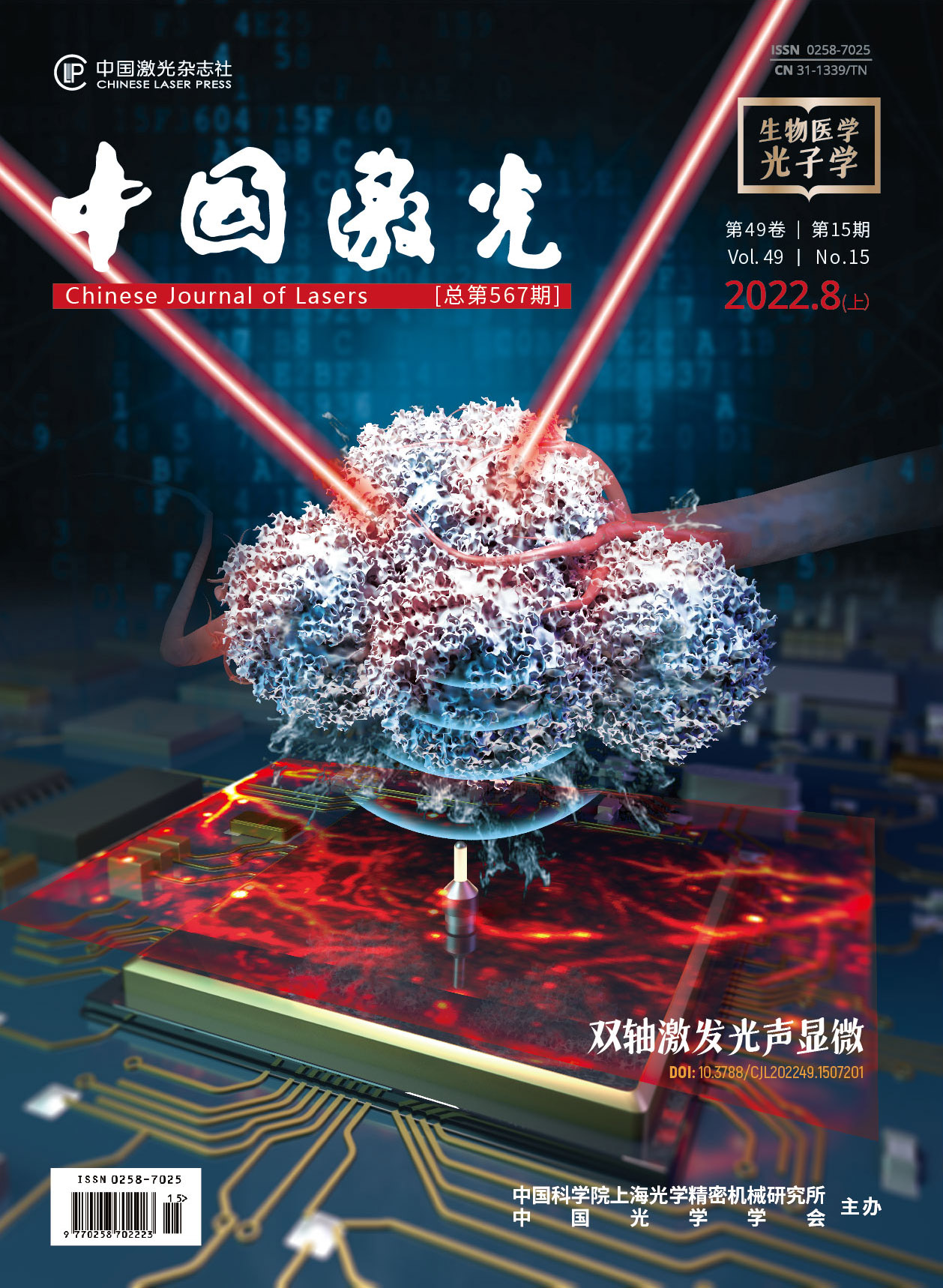全固态228 nm 远紫外脉冲激光的灭菌效果  下载: 752次
下载: 752次
The ongoing coronavirus pandemic has propelled the need for new approaches to disinfection, especially for airborne viruses. The 254 nm emission of low-pressure vacuum lamps is known for its antimicrobial effect; however, its radiation is harmful to human health, causing skin cancer and cataracts. Some studies have shown that short-wavelength ultraviolet (UV) light in the spectral region of 200-230 nm (far-UVC) can inactivate pathogens without harming human cells. Thus, it has great prospects for many applications. Sufficient studies have proved the antibacterial performance of far-UVC band range in an excimer lamp emitting a peak wavelength of 222 nm light. Furthermore, laser light sources can realize long-distance transmission and complement the deficiency of excimer lamps in remote sterilization and disinfection. This study investigates the antibacterial effect of a self-developed far-UVC laser with a peak wavelength of 228 nm and hopes to provide a new technical approach for the inactivation of the novel coronavirus and other microbial pathogens.
Bacterial sample preparation: Escherichia coli (E. coli) widely exists naturally and is a pathogen of major focus in human public health defense. It is also one of the most drug-resistant species in the enterobacterium group. Therefore, it is often used in ultraviolet disinfection and environmental health research. Bacillus cereus (B. cereus), which is closely related to humans, causes food poisoning and cannot be eliminated by pasteurization or normal hygiene procedures due to the heat and acid resistance of its spores. Therefore, the strains used in this experiment are E. coli and B. cereus. E. coli and B. cereus are provided by the Ministry of Education Key Laboratory for Ecology of Tropical Islands, Hainan Normal University, and subsp. Kustaki HD-1, provided by the Environmental Microbial Ecology Laboratory of Hainan Normal University. Both strains are cultured in a nutrient agar medium and placed in an incubator at 35 ℃ for 1 day. Nutrient agar medium is provided by Guangdong Huankai Microbial Technology Co., LTD, China. UV irradiation source: the irradiation source is a self-developed all-solid-state 228 nm far-UVC laser, which provides UV irradiance of up to 35 mW/cm2, and its spectral linewidth is less than 0.1 nm. The laser is realized by LD-pumped Nd3+ laser crystal, Q-switched technology, and nonlinear optical frequency conversion technology. All-solid-state lasers have the advantages of small size, high efficiency, good beam quality, high reliability, long life, and portability. 228 nm far-UVC laser sterilization: we input a certain concentration of 1 mL bacterial suspension sample into a high permeability UVC cuvette. The 228 nm laser irradiance of 0.1 mW/cm2 is obtained by adjusting the laser output power and the placement of the colorimeter. E. coli suspension samples are irradiated for 5, 10, 15, and 20 s [Fig. 1(b)], and B. cereus suspension samples are irradiated for 15, 30, 45, and 60 s [Fig. 1(c)] at 228 nm far-UV light of 0.1 mW/cm2. The experiment is repeated three times for each sample at the same irradiation dose.
Figs. 1 (b) and (c) show the distribution of bacteria before and after 228 nm laser irradiation. The concentration of bacterial suspension samples in the control and irradiated groups is determined using the nutrient agar plate counting method. The detection results are shown in Table 1. When the E. coli suspension is irradiated by 228 nm laser for 10, 15, and 20 s (1, 1.5, and 2 mJ/cm2), the inactivation rates are 90.7%, 96.9%, and 100%, respectively. When the B. cereus suspension is irradiated by 228 nm laser for 30, 45, and 60 s (3, 4.5, and 6 mJ/cm2), the inactivation rates are 88.4%, 98.6%, and 100%, respectively.
This experimental study shows that the use of several mJ/cm2 doses of far-UVC 228 nm pulsed laser irradiation can effectively inactivate E. coli and B. cereus, whereas the use of excimer lamps requires dozens of mJ/cm2 doses. Compared with the excimer light source, the far-UVC pulsed laser light source shows a stronger sterilization effect. The next step is to conduct experimental research on the inactivation of the influenza virus using a far-UVC 228 nm pulsed laser.
赵志斌, 程成, 金映虹, 曾文博, 金秦隆, 李权, 李娇娇, 曲轶, 薄报学. 全固态228 nm 远紫外脉冲激光的灭菌效果[J]. 中国激光, 2022, 49(15): 1515001. Zhibin Zhao, Cheng Cheng, Yinghong Jin, Wenbo Zeng, Qinlong Jin, Quan Li, Jiaojiao Li, Yi Qu, Baoxue Bo. Inactivation Effect of All-Solid-State 228 nm Far-UVC Pulsed Laser[J]. Chinese Journal of Lasers, 2022, 49(15): 1515001.







